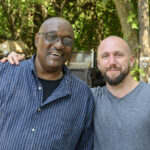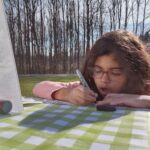Mechanisms and Design Elements
What is it about nature that is having such a remarkable impact on our brains and our health?
This is the question our team of researchers set out to explore six years ago.
Their intent was to study the effects of nature on cognitive functioning without constructing or even visiting a natural space. They have done this by showing study participants images of different design elements from many of the TKF Foundation’s regional, Mid-Atlantic Open Spaces Sacred Places. Through a combination of fMRI brain imaging, cortisol assays and journal analysis, they have measured the impact of these design elements on their subjects.
THE ISSUE
The results of this work could influence policy members by helping them to understand the economic benefits of building nature into cities. If we can quantify the effects of nature, we can put a dollar value on how much nature benefits people and this could ultimately impact how and where we allocate our resources.
THE SOLUTION
Tools derived from computer vision and statistics will be applied to the design of urban parks to better improve the human health benefits of exposure to urban nature.
THE HIGHLIGHTS
- This project will apply new scientific knowledge to the design of urban green spaces.
- Behavioral experimentation, fMRI brain imaging, cortisol assays and semantic analysis tools will be employed to quantify successful design elements.
- Results will be translated into design guidelines to inform policy and ensure that sacred restorative spaces proliferate in some of the most challenging urban environments.





